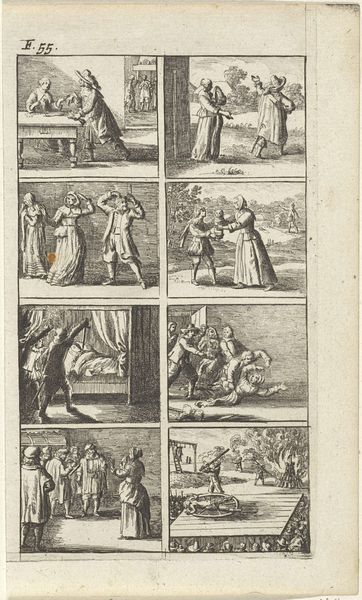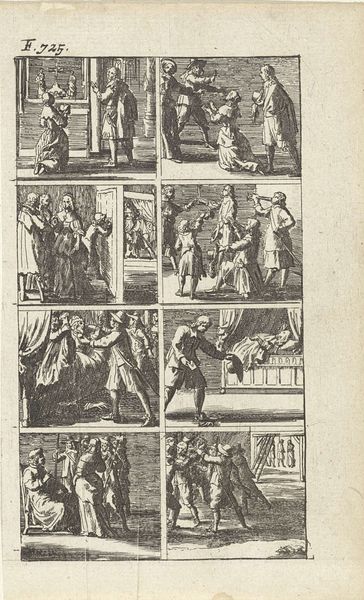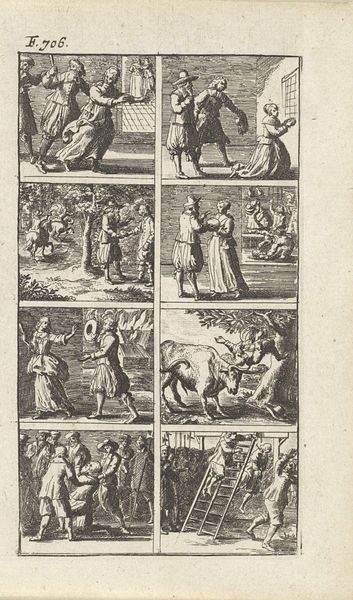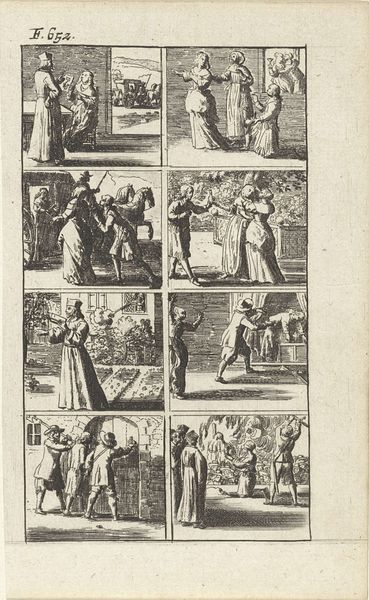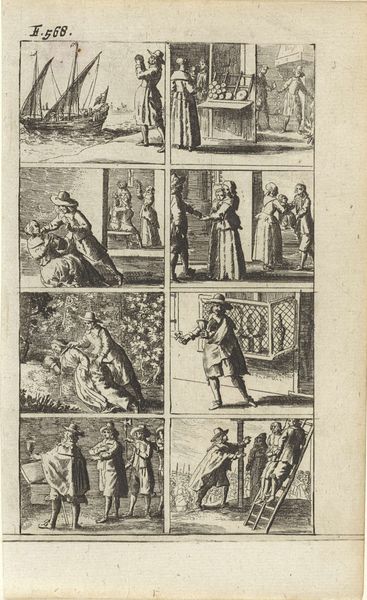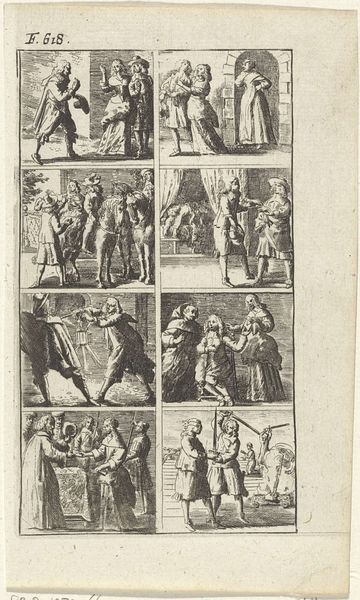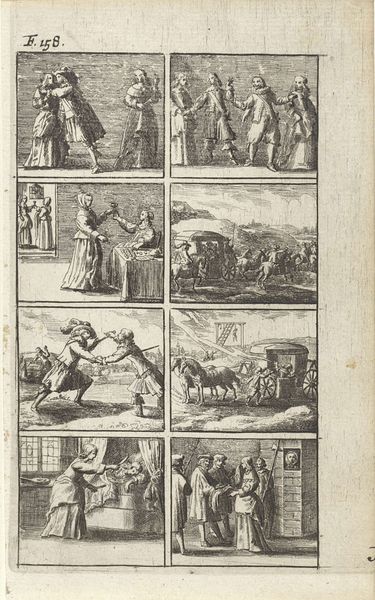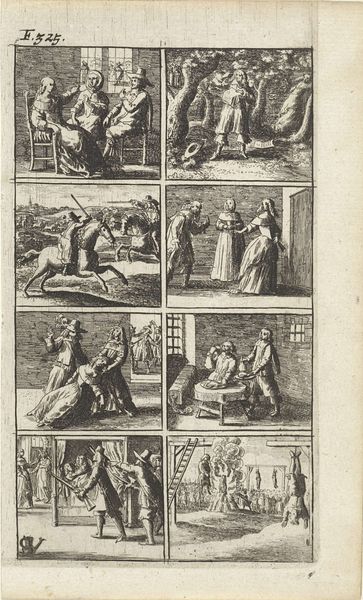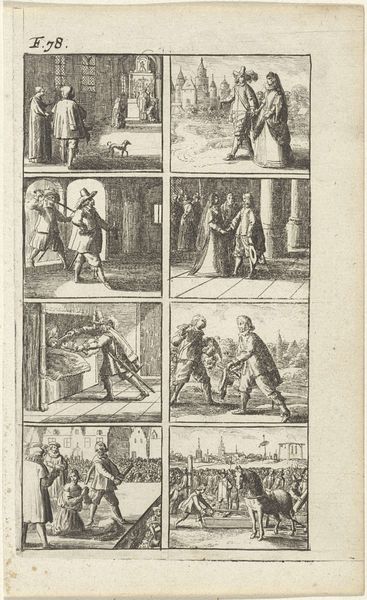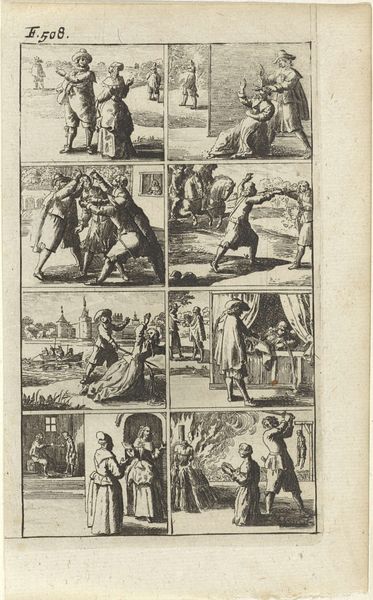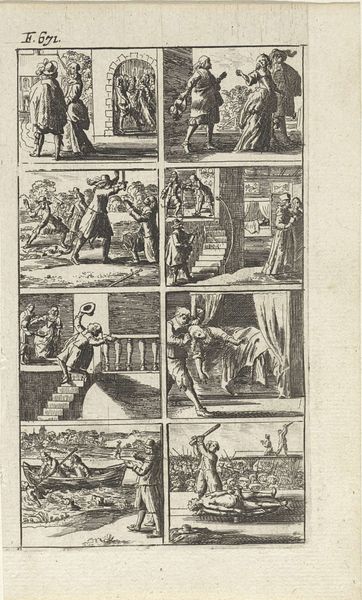
Verhaal met voorstellingen van moord en doodstraf (F. 852.) 1667
0:00
0:00
abrahamdirckszsantvoort
Rijksmuseum
print, engraving
#
narrative-art
#
dutch-golden-age
# print
#
figuration
#
line
#
genre-painting
#
history-painting
#
engraving
Dimensions: height 155 mm, width 93 mm
Copyright: Rijks Museum: Open Domain
Editor: So, this is "Verhaal met voorstellingen van moord en doodstraf (F. 852.)" by Abraham Dircksz. Santvoort, created in 1667. It's an engraving. It strikes me as quite graphic for the period. What are your initial thoughts about this series of violent images presented together like this? Curator: It's fascinating, isn't it? An engraving from the Dutch Golden Age focusing so intently on violence and punishment. Considering the period, such explicit depictions of crime and retribution served a crucial public role. These weren't merely aesthetic exercises. We must remember how visual media then acted as both news and moral instruction for a largely illiterate populace. How do you think this piece engaged with the societal anxieties of its time? Editor: That's a great point! I guess I hadn’t really thought about its role in shaping public perception of justice. Were these kinds of images common then? Curator: Yes and no. Depictions of morality tales existed, of course. However, the focus here seems less about glorifying heroism and more about broadcasting the consequences of transgression. Think about how burgeoning print culture meant broader dissemination. Images like this played into the theater of justice. Does the layout itself remind you of anything? The grid of scenes? Editor: Sort of like a comic strip almost? Maybe like public announcements from town squares back then? Curator: Precisely. Each scene meticulously showcases steps leading to, and including, harsh consequences. This served as stark warning within a rapidly changing, urbanizing society where maintaining order was paramount. The image really operates at the intersection of art, social control, and emerging mass media. Editor: So it's about more than just documenting crime; it's actively participating in shaping behavior! This makes me see it so differently. Curator: Exactly. Consider who might have commissioned it and its possible placement—the prints may well have functioned as an institutional apparatus influencing how citizens thought about crime, law, and social order. Editor: I hadn't considered the political dimension of displaying something like this! Thank you; I really learned a lot! Curator: Likewise, it's important to see artwork as a powerful piece in our understanding of social history, revealing complex historical interactions.
Comments
No comments
Be the first to comment and join the conversation on the ultimate creative platform.
